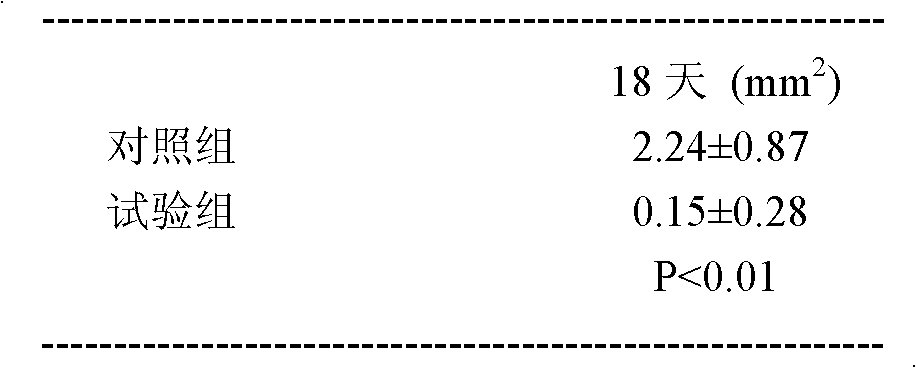New application of arginine
A technology of arginine and topical drugs, applied in the field of arginine, can solve the problems of exacerbating the damage of body tissues, achieve the effects of reducing metabolic burden, promoting synthesis, and reducing pain
- Summary
- Abstract
- Description
- Claims
- Application Information
AI Technical Summary
Problems solved by technology
Method used
Image
Examples
Embodiment 1
[0049] Example 1, Experimental Results of the Effect of External Application of Arginine on Wound Healing and Scar Formation
[0050] Twenty 6-week-old Wistar rats, weighing 220-260 grams. Randomly divided into 2 groups. There were 10 rats in each of the control group and the treatment group. Used to observe the effect of arginine on wound healing, and to observe the effect on scar tissue formation. Phenobarbital 50 mg / kg body weight, intraperitoneal injection. After 3-5 minutes of anesthesia, the skin on the center of the back of the rat was removed. After wiping and disinfecting with iodine tincture and alcohol, under aseptic conditions, cut an incision with a length of 10 mm and a depth of 1 mm (reaching the muscle layer). Cover with a sterile dressing after the amino acid powder.
[0051] 1. The effect of arginine on wound healing:
[0052] After the above treatment, the maximum length of the wound and the maximum width perpendicular to the long axis of the rats in e...
PUM
 Login to View More
Login to View More Abstract
Description
Claims
Application Information
 Login to View More
Login to View More - R&D
- Intellectual Property
- Life Sciences
- Materials
- Tech Scout
- Unparalleled Data Quality
- Higher Quality Content
- 60% Fewer Hallucinations
Browse by: Latest US Patents, China's latest patents, Technical Efficacy Thesaurus, Application Domain, Technology Topic, Popular Technical Reports.
© 2025 PatSnap. All rights reserved.Legal|Privacy policy|Modern Slavery Act Transparency Statement|Sitemap|About US| Contact US: help@patsnap.com



